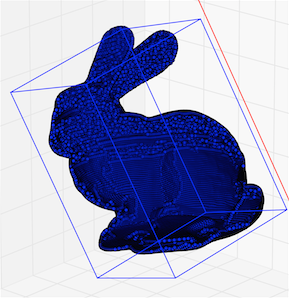wide-minima-density-hypothesis
Details about the wide minima density hypothesis and metrics to compute width of a minima
This repo presents the wide minima density hypothesis as proposed in the following paper:
Key contributions:
- Hypothesis about minima density
- A SOTA LR schedule that exploits the hypothesis and beats general baseline schedules
- Reducing wall clock training time and saving GPU compute hours with our LR schedule (Pretraining BERT-Large in 33% less training steps)
- SOTA BLEU score on IWSLT'14 ( DE-EN )
Prerequisite:
- CUDA, cudnn
- Python 3.6+
- PyTorch 1.4.0
Knee LR Schedule
Based on the density of wide vs narrow minima , we propose the Knee LR schedule that pushes generalization boundaries further by exploiting the nature of the loss landscape. The LR schedule is an explore-exploit based schedule, where the explore phase maintains a high lr for a significant time to access and land into a wide minimum with a good probability. The exploit phase is a simple linear decay scheme, which decays the lr to zero over the exploit phase. The only hyperparameter to tune is the explore epochs/steps. We have shown that 50% of the training budget allocated for explore is good enough for landing in a wider minimum and better generalization, thus removing the need for hyperparameter tuning.
- Note that many experiments require warmup, which is done in the initial phase of training for a fixed number of steps and is usually required for Adam based optimizers/ large batch training. It is complementary with the Knee schedule and can be added to it.
To use the Knee Schedule, import the scheduler into your training file:
>>> from knee_lr_schedule import KneeLRScheduler
>>> scheduler = KneeLRScheduler(optimizer, peak_lr, warmup_steps, explore_steps, total_steps)
To use it during training :
>>> model.train()
>>> output = model(inputs)
>>> loss = criterion(output, targets)
>>> loss.backward()
>>> optimizer.step()
>>> scheduler.step()
Details about args:
optimizer: optimizer needed for training the model ( SGD/Adam )peak_lr: the peak learning required for explore phase to escape narrow minimaswarmup_steps: steps required for warmup( usually needed for adam optimizers/ large batch training) Default value: 0explore_steps: total steps for explore phase.total_steps: total training budget steps for training the model
Measuring width of a minima
Keskar et.al 2016 (https://arxiv.org/abs/1609.04836) argue that wider minima generalize much better than sharper minima. The computation method in their work uses the compute expensive LBFGS-B second order method, which is hard to scale. We use a projected gradient ascent based method, which is first order in nature and very easy to implement/use. Here is a simple way you can compute the width of the minima your model finds during training:
>>> from minima_width_compute import ComputeKeskarSharpness
>>> cks = ComputeKeskarSharpness(model_final_ckpt, optimizer, criterion, trainloader, epsilon, lr, max_steps)
>>> width = cks.compute_sharpness()
Details about args:
model_final_ckpt: model loaded with the saved checkpoint after final training stepoptimizer: optimizer to use for projected gradient ascent ( SGD, Adam )criterion: criterion for computing loss (e.g. torch.nn.CrossEntropyLoss)trainloader: iterator over the training dataset (torch.utils.data.DataLoader)epsilon: epsilon value determines the local boundary around which minima witdh is computed (Default value : 1e-4)lr: lr for the optimizer to perform projected gradient ascent ( Default: 0.001)max_steps: max steps to compute the width (Default: 1000). Setting it too low could lead to the gradient ascent method not converging to an optimal point.
The above default values have been chosen after tuning and observing the loss values of projected gradient ascent on Cifar-10 with ResNet-18 and SGD-Momentum optimizer, as mentioned in our paper. The values may vary for experiments with other optimizers/datasets/models. Please tune them for optimal convergence.
- Acknowledgements: We would like to thank Harshay Shah (https://github.com/harshays) for his helpful discussions for computing the width of the minima.
Citation
Please cite our paper in your publications if you use our work:
@article{iyer2020wideminima,
title={Wide-minima Density Hypothesis and the Explore-Exploit Learning Rate Schedule},
author={Iyer, Nikhil and Thejas, V and Kwatra, Nipun and Ramjee, Ramachandran and Sivathanu, Muthian},
journal={arXiv preprint arXiv:2003.03977},
year={2020}
}
- Note: This work was done during an internship at Microsoft Research India






